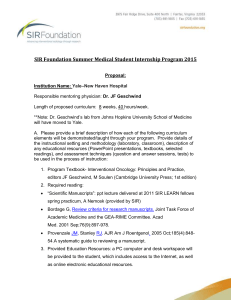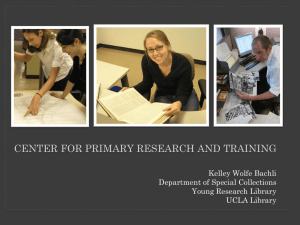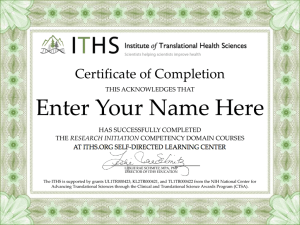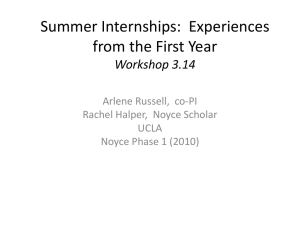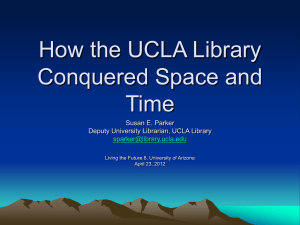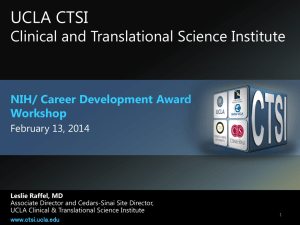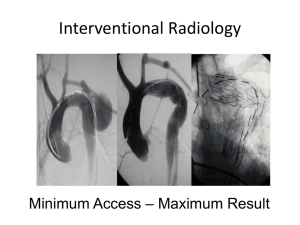UCLA Medical Center
advertisement
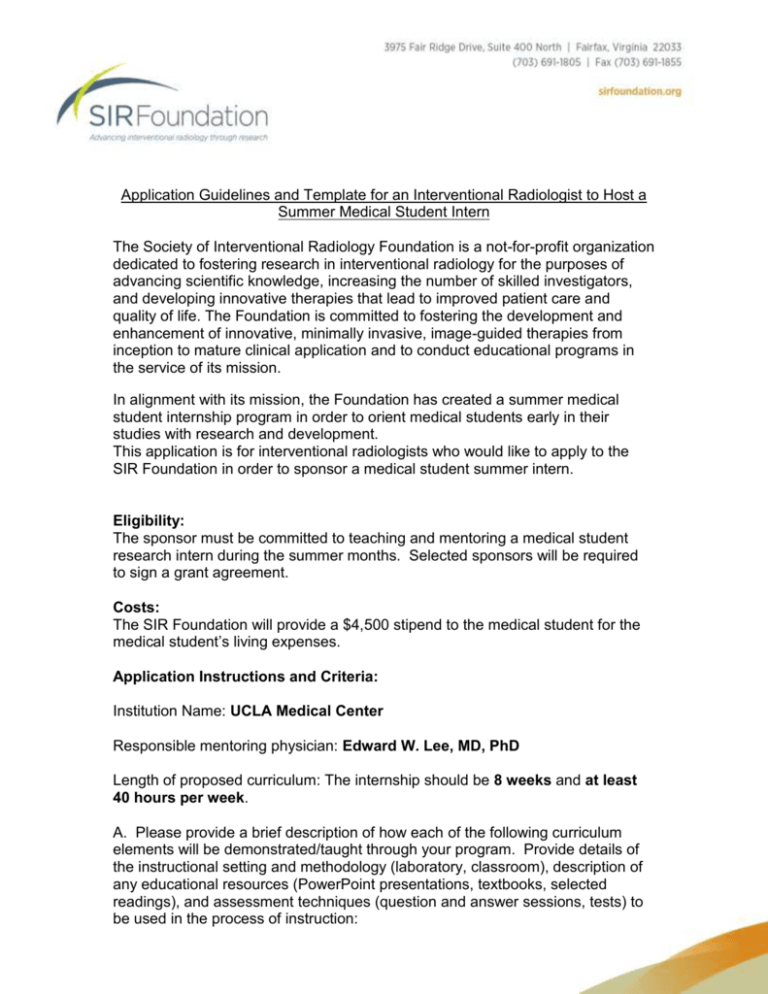
Application Guidelines and Template for an Interventional Radiologist to Host a Summer Medical Student Intern The Society of Interventional Radiology Foundation is a not-for-profit organization dedicated to fostering research in interventional radiology for the purposes of advancing scientific knowledge, increasing the number of skilled investigators, and developing innovative therapies that lead to improved patient care and quality of life. The Foundation is committed to fostering the development and enhancement of innovative, minimally invasive, image-guided therapies from inception to mature clinical application and to conduct educational programs in the service of its mission. In alignment with its mission, the Foundation has created a summer medical student internship program in order to orient medical students early in their studies with research and development. This application is for interventional radiologists who would like to apply to the SIR Foundation in order to sponsor a medical student summer intern. Eligibility: The sponsor must be committed to teaching and mentoring a medical student research intern during the summer months. Selected sponsors will be required to sign a grant agreement. Costs: The SIR Foundation will provide a $4,500 stipend to the medical student for the medical student’s living expenses. Application Instructions and Criteria: Institution Name: UCLA Medical Center Responsible mentoring physician: Edward W. Lee, MD, PhD Length of proposed curriculum: The internship should be 8 weeks and at least 40 hours per week. A. Please provide a brief description of how each of the following curriculum elements will be demonstrated/taught through your program. Provide details of the instructional setting and methodology (laboratory, classroom), description of any educational resources (PowerPoint presentations, textbooks, selected readings), and assessment techniques (question and answer sessions, tests) to be used in the process of instruction: UCLA Interventional Radiology Medical Student Internship Curriculum 1. Textbook: a. Introduction to Interventional Radiology (Lee/McWilliams) b. Handbook of Interventional Radiologic Procedure (Kandarpa) c. Vascular Interventional Radiology (Kaufman) 2. Required Readings: a. “Scientific Manuscripts”: PowerPoint lecture delivered at 2011 SIR LEARN fellows spring practicum, by Nemcek (provided by SIR) b. PowerPoint lecture collection provided by UCLA IR faculty c. One to two articles per week for IR journal club 3. Mandatory Lectures: a. Tuesday PM – IR Journal club b. Wednesday AM – didactic lectures given by UCLA IR faculty c. Thursday AM – case review presented by UCLA Fellows/Faculty d. Daily teaching rounds e. Weekly Surgery/Medicine/Liver Grandround 4. Weekly Schedule: a. IR Angio suite time = 5 AMs b. IR Research laboratory time = 3 PMs c. IR Clinic time = 1 PM d. IR Consultation time = 1 PM e. Mandatory mentoring meeting with Dr. Lee on Monday PM. 5. Educational Resources: UCLA online journal access and UCLA medical library access including over 400 online health-related references available to UCLA students/residents. Mandatory elements: 1. Concept development – distillation of a clinical question into elemental components: The student will spend the first two weeks shadowing our interventional faculty to understand and familiarize with the basis of interventional radiology and imaged-guide therapy. During the two weeks, the student will function as a junior resident and have hands-on experience with basic procedures. The student will be required to attend all the mandatory lectures and daily teaching rounds. During the 3 rd-5th week, the student will be assigned to a mentoring attending to get more exposure and learn more in-depth knowledge about IR. At the end of the 5th week, the student will identify an interesting topic or research project under the supervision of an IR faculty. 2. Experimental design and statistics, including proof of concept, steps in validation of new technique: Once the student identifies the topic or research project of interest, one attending and fellow will be assigned to mentor and support the project to the completion. If necessary, the departmental seed grant will be obtained to support the project. Our department statistician will support the project during the design and analysis phase. A wide range of projects are available in our IR section including basic science (bench study), small to large animal translational research and clinical research projects. The student will be required to submit an abstract to the SIR Annual Meeting and/or other national/international scientific meetings to present the data. 3. Techniques in the basic science lab The student will be able to utilize our basic/translational research laboratory available in the Center for Health Science (CHS) Building to complete the project. This state of the art research facility consists of wet laboratory and office spaces. The office space includes working desks, a library, several meeting/conference rooms with AV equipment, and a business center. In addition to individual bench space, the wet laboratory contains shared facilities including dedicated mammalian tissue culture rooms, viral and bacterial culture rooms and necessary equipments for dedicated molecular, biochemical and genomic research. Also, we have access to the core animal facility where a variety of surgical and diagnostic procedures may be performed on small and large animal species by fully trained staff. Our research laboratory is conveniently located next to a brand new state-of-the-art translational research imaging center called the UCLA Translational Research Imaging Center (TRIC) which is dedicated for a translational research purposes. The TRIC has the newest Siemens Zeego Artis angiography suite and 64-multidetector dual source CT dedicated for translational research projects. Finally, some of the other resources that we will have access to during this project are the Translational Pathology Core Laboratory and Center for Advanced Surgical and Interventional Technology (CASIT) in the UCLA Medical Center. 4. Data collection, statistics, and meaningful analysis of data As briefly described above, the student will be involved in every aspect of the research project including data collection, statistical analysis and data analysis. These phases of research will be supervised by an assigned attending and fellow or research fellow in the section. In addition, our department statistician will be involved from the beginning of the project to completion to supervise and mentor these phases. Data collection will be utilized by either in-house built database program or commercially available program such as Excel® or Access®. Statistical analysis will be performed using SPSS ver16. A tutorial DVD for SPSS and Excel® is available for students to learn more statistics. 5. Constructing a well-written scientific paper: The student will be mentored closely and given systematic step-wise method of writing a scientific manuscript by the end of the project period. The student will be given one writing task per week to complete and each writing assignment will be scored and reviewed by the faculty member to provide a constructive feedback to student. At the conclusion of each writing task, the student will get familiarized with different sections of scientific manuscript and will be able to produce a well-organized and written manuscript which may be submitted for a publication with further refinement by faculty. Suggested/optional elements: 1. Clinical trials design and regulatory approval/obstacles/legal considerations If the student chooses to participate in our on-going clinical trial or designing a new clinical study at our institution, the student will be required to involve in preparing our institutional review board (IRB) application, assisting submission and resubmission process, and preparing IRB approved patient consents. Prior to participate in a clinical research project, the student will complete our rigorous online and in- person training courses necessary to understand and participate in clinical trial designing and execution. The student will work closely with our departmental clinical research coordinator, assigned faculty member and other members of clinical trial research project. 2. Design and conduct of animal research and observation of animal research If the student chooses to participate in our translational research projects involving small and large animals, the student will be required to involve in preparing our animal research committee (ARC) application and assisting submission and resubmission process. Prior to participation in a translational research project, the student will complete both online and inperson training courses provided by the UCLA Department of Laboratory Animal Medicine (DLAM) faculty. The student will participate in every aspect of the translational research including; daily animal care, surgical and non-surgical procedures, pre and post-op cares, anesthesia and data collection/analysis. B. Please provide a brief outline of available research topics, one of which the student will select for completion as part of the program. Projects should be of a scope appropriate for completion within the limited time frame provided. 1. TIPS Projects 2. BRTO Projects 3. TACE Projects 4. IVC Filter Projects 5. Biopsy Projects 6. Tumor Ablation Projects 7. Stent Projects 8. Embolization Projects 9. Atherosclerosis Projects 10. Pancreatic Cancer Projects 11. Rad-Path Projects The student will be asked to make an oral presentation at the Medical Student Brunch at the SIR Annual Scientific Meeting in 2016.
